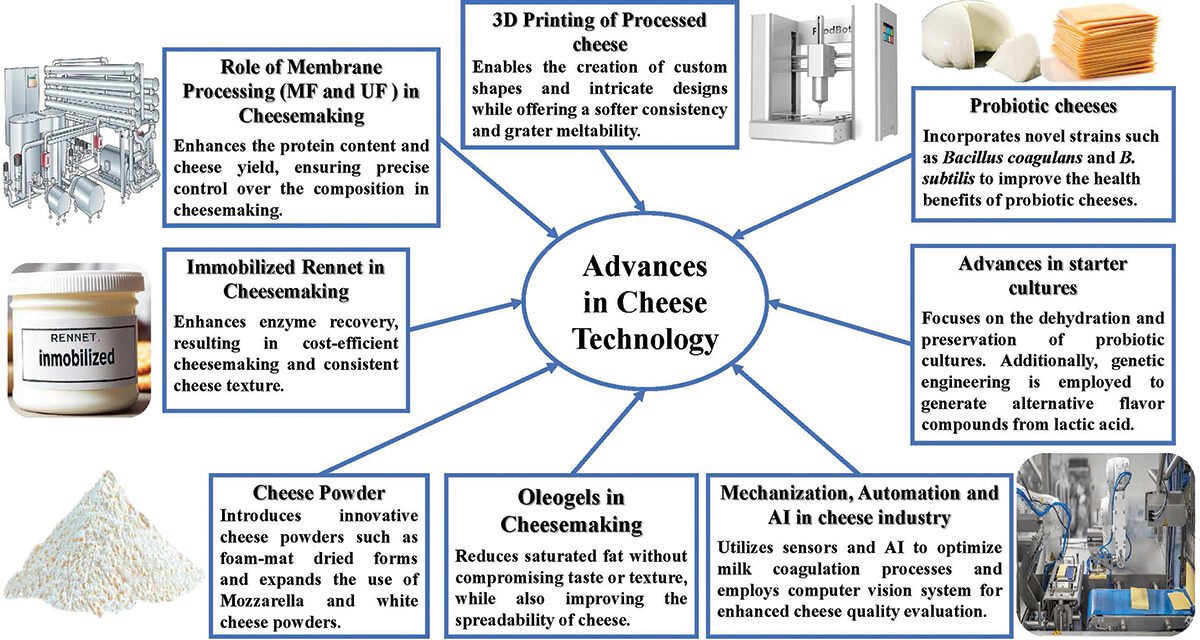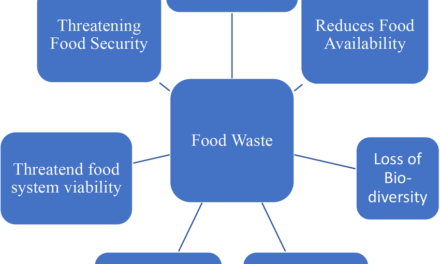Cheese production combines traditional craftsmanship with advanced technologies to create a wide variety of cheese types while ensuring consistency, safety, and efficiency. Here are the key technologies used in modern cheese production:
1. Milk Preparation and Standardization
- Technology Used:
- Centrifugal Separators: Standardize milk fat content by separating cream and skim milk.
- Inline Analyzers: Measure fat, protein, and lactose content in real time for precise formulation.
- Pasteurization Systems: Eliminate pathogens and extend milk shelf life using heat treatment.
- Purpose:
- Ensure consistent milk quality and composition.
- Remove contaminants while retaining nutrients.
2. Coagulation
- Technology Used:
- Automated Cheese Vats: Mix milk with coagulants (e.g., rennet or plant-based enzymes) and starter cultures under controlled conditions.
- pH Sensors: Monitor acidity levels to optimize curd formation.
- Purpose:
- Convert liquid milk into curds and whey by coagulating proteins.
3. Cutting and Stirring
- Technology Used:
- Curd Cutters: Use automated knives or wires to cut curds into uniform sizes.
- Agitators: Stir curds gently to maintain uniform texture and prevent clumping.
- Purpose:
- Promote whey separation and ensure curds are evenly processed.
4. Whey Separation
- Technology Used:
- Draining Belts: Continuously separate whey from curds during production.
- Centrifugal Separators: Remove residual whey for drier cheeses.
- Microfiltration Systems: Separate whey proteins for use in other products like whey protein powder.
- Purpose:
- Achieve desired moisture content in curds.
5. Curd Handling and Molding
- Technology Used:
- Vacuum Molders: Shape curds into blocks, wheels, or other specific forms.
- Cheese Hoops and Molds: Ensure uniform shaping during pressing.
- Purpose:
- Shape and compress curds into final cheese forms.
6. Salting
- Technology Used:
- Brine Tanks: Submerge cheese in saltwater for precise salting.
- Salt Sprayers: Apply dry salt uniformly to cheese surfaces.
- Salt Monitoring Systems: Measure salinity levels for consistent flavor and preservation.
- Purpose:
- Enhance flavor, control microbial growth, and improve texture.
7. Ripening and Aging
- Technology Used:
- Climate-Controlled Aging Rooms: Maintain specific temperature, humidity, and airflow conditions for ripening.
- Automated Rind Washers: Apply brine or mold cultures to develop desired rind characteristics.
- Microbial Management Systems: Monitor and control mold and bacteria growth during aging.
- Purpose:
- Develop flavor, texture, and aroma profiles through enzymatic and microbial activity.
8. Packaging
- Technology Used:
- Vacuum Packaging Machines: Remove air to extend shelf life and prevent mold growth.
- Modified Atmosphere Packaging (MAP): Replace oxygen with nitrogen or carbon dioxide to preserve freshness.
- Automated Wrapping Machines: Package cheese efficiently for retail or wholesale distribution.
- Purpose:
- Protect cheese from contamination and extend its shelf life.
9. Cleaning and Sanitation
- Technology Used:
- Clean-In-Place (CIP) Systems: Automate cleaning of equipment like vats, pipes, and molds without disassembly.
- UV Sterilization: Eliminate microbes on surfaces and in air within production areas.
- Ozone Generators: Sanitize water and surfaces with eco-friendly methods.
- Purpose:
- Ensure hygiene and compliance with food safety regulations.
10. Quality Control and Testing
- Technology Used:
- Spectrometers: Analyze moisture, fat, and protein content in cheese.
- Microbial Analyzers: Detect pathogens or spoilage organisms in raw materials and finished products.
- Texture Analyzers: Measure cheese firmness and elasticity for quality assurance.
- Purpose:
- Maintain product consistency and ensure safety standards are met.
11. Specialized Cheese-Making Techniques
- For Specific Cheeses:
- Stretching Machines: For cheeses like mozzarella, where curds are heated and stretched to achieve a fibrous texture.
- Cheese Harps: For soft cheeses, used to gently cut curds to preserve their delicate structure.
- Blue Cheese Needlers: Create air channels for mold growth in blue cheese varieties.
- Purpose:
- Tailor processes to specific cheese types and styles.
12. Digital Automation and Monitoring
- Technology Used:
- SCADA (Supervisory Control and Data Acquisition): Monitors and controls cheese production in real time.
- IoT Sensors: Track temperature, humidity, and pressure at various stages.
- Machine Learning Algorithms: Optimize production by analyzing historical data.
- Purpose:
- Improve efficiency and consistency while reducing human error.
13. By-Product Management
- Technology Used:
- Whey Processing Units: Extract proteins and lactose from whey for use in supplements, beverages, or animal feed.
- Membrane Filtration Systems: Separate whey into components like whey protein isolate or lactose.
- Purpose:
- Maximize resource utilization and reduce waste.
14. Sustainability Enhancements
- Technology Used:
- Energy-Efficient Pasteurizers: Reduce energy consumption during heat treatment.
- Water Recycling Systems: Reuse water in non-contact processes.
- Renewable Energy Integration: Solar panels or biogas from dairy waste.
- Purpose:
- Lower the environmental footprint of cheese production.
15. Customization for Artisanal Cheeses
- Technology Used:
- Small-Scale Equipment: Tailored for low-volume production with precise control.
- Microbial Culture Customization Tools: Create unique flavors and textures.
- Purpose:
- Allow smaller producers to compete by offering unique, high-quality cheeses.
Conclusion
Modern cheese production relies on a combination of traditional methods and cutting-edge technologies to meet the demands for variety, quality, and efficiency. From raw milk preparation to packaging and distribution, automation, precision control, and sustainability are key drivers in this evolving industry.
Hashtags
#SustainableDairy #CheeseCulture #CuttingEdgeCheese #FarmToTableCheese #CheeseMakersUnite #CheesePerfection #DairyInnovation #CheeseScience #CheeseArtistry #TechSavvyDairy #CheeseRevolution #DairyTechAdvancements #CheeseMakersCommunity #CheeseTastingExperience #CheeseProductionProcess #DairyTechEvolution #CheeseIndustryInsights #CheeseProductionEfficiency #CheeseMakingMastery #DairyTechBreakthrough









